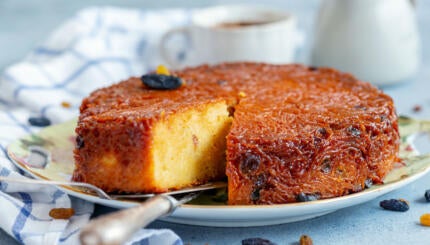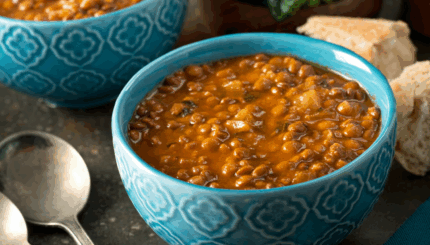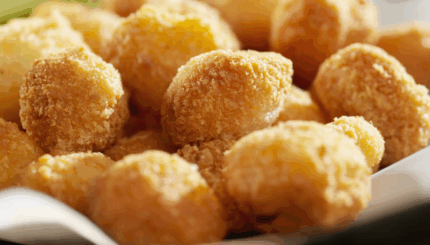He dreamed of a career in the Israeli military. Instead, ironically, he co-created an iconic cereal brand which bears a distinctly military name and rank — Cap’n Crunch. The man behind the cereal is food technologist Chaim Gur-Arieh. He not only was on the laboratory ground floor bringing Cap’n Crunch to supermarket shelves, but Gur-Arieh brought us multiple other blockbuster brands and products — Hidden Valley Ranch Dressing, Tiger’s Milk Bar, single serving pudding and gelatin cups, and wine coolers.
Ninety-year-old Gur-Arieh is a non-stop innovator not only of foods, but of himself. He’s lived on three continents and pursued three distinct careers. Born in Istanbul, Turkey to a family that traces its roots there to the 1500s, he moved on his own at 14 to Israel. A high school dropout, his hopes of a life in the Israeli army ended when an explosion caused a hearing loss. Undeterred, he returned to school and earned a B.S. in chemical engineering.
In Israel, Chaim changed his last name from Mizrachi, a common name there, to Gur-Arieh, meaning “lion cub.” But this wasn’t the only change he made. After working at a rubber factory, Gur-Arieh decided chemical engineering wasn’t for him, he explained in a recent interview. So, he reinvented himself once more. He moved to the U.S., earned a master’s degree and Ph.D. in Food Science at the University of Illinois, and became a food technologist.
His first job was at Quaker Oats Company in the Midwest. It was there Cap’n Crunch was born. At the time, Quaker Oats had another cereal on the market. It also had a problem. That cereal, Life, was infringing on a patent owned by Ralston Purina Company, according to Gur-Arieh. So, Quaker Oats needed an alternative manufacturing method, and while working on one, came the idea of developing a sweet cereal for children, namely Cap’n Crunch.
The Nosher celebrates the traditions and recipes that have brought Jews together for centuries. Donate today to keep The Nosher's stories and recipes accessible to all.
While Cap’n Crunch is famed for its sugary taste and distinctive cartoon character, Gur-Arieh’s contribution was technical and industry trend setting. He co-developed the cereal’s manufacturing process called extrusion, the mechanical process when grain is forced to flow — under one or more varieties of conditions of mixing, heating and cutting — through a mold which shapes and/or puff-dries the grain. Before extrusion became the most common method of processing cereal, grains were typically rolled.
In the six decades since its introduction by Quaker Oats (now a subsidiary of PepsiCo), the popular corn and oat cereal has spun off into numerous flavors and seasonal variations, including ones with berries, “vanilly,” peanut butter” and “choco.”
As for Gur-Arieh, he too spun off into multiple ventures. He worked for Del Monte Foods and a company developing food for astronauts. After that, he ran his own companies and along the way hit another gastronomical home run — developing Hidden Valley Ranch Dressing or more accurately the dressing as we dip and devour it today. Years before, ranch dressing had gone to market in dry mix packets, but Gur-Arieh created the bottled liquid formula convenience-loving consumers didn’t know they craved.
About this time, Gur-Arieh took on a partner-for-life, his wife Elisheva. After 35 years in the food business, at an age when many people might consider retirement, Chaim and Elisheva opted to fulfill a longtime dream of opening a winery. Their Di Arie Vineyard & Winery, located in the Sierra foothills outside of Sacramento, CA, grows 11 varietals of grapes. In addition to the vineyard, there’s a tasting room and a wine club. Chaim makes the wine, while Elisheva, a nationally exhibited artist, oversees sales and marketing.
Now, 24 years into operating the winery and having just celebrated his 90th birthday, you might ask when does the man behind Cap’n Crunch start resting on his laurels — or at least on his vineyard? The answer: Not yet.
Since COVID, the vineyard faces new challenges and Gur-Arieh is innovating once again to meet them. Sales are down and consumer tastes are changing, he explained.
“First, there’s a general decrease in the amount of wine people are drinking. It’s partially an economic decision, but it’s also generational,” he said. “Younger drinkers are turning away from wine and back to hard liquor and that’s having an impact.”
To combat the downturn, this nonagenarian inventor has created three wines that pair with sushi. This new Hikari line is being marketed to money-spending younger foodie fans to win them back to wine. It has three offerings including a specially formulated chilled red wine blend and comes in bottles and cans – again, a nod to a younger demographic. Hikari is already sold in supermarkets in the West and Gur-Arieh is negotiating with a major Midwest chain to place Hikari there.
And with that update on his business, our interview concluded. The man who never lost his stride, be it during relocation from country to country (or continent to continent) or industry to industry, put on his floppy hat and headed out the door. There were grapes to tend to, watered and watched. Another day of work for this constantly innovating continually enterprising food scientist-turned-vintner.



